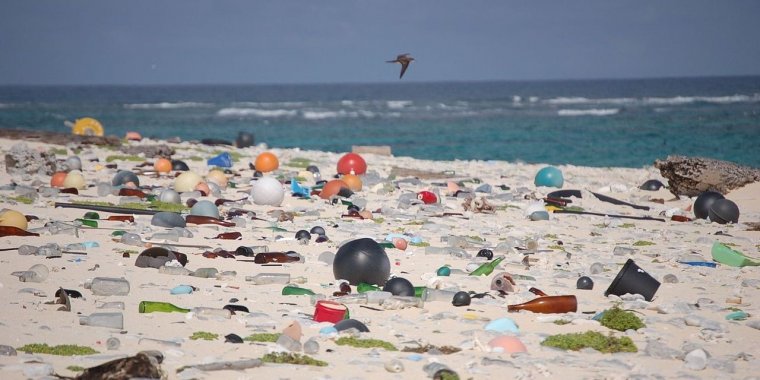| News / Science News |
Plastic debris linked to coral disease, death
An international group of researchers has found that plastic trash entering the world’s oceans attracts microbes that cause corals to sicken and die.

Beach strewn with plastic debris. Image credit: U.S. Fish and Wildlife Service
“Plastic debris acts like a marine motorhome for microbes,” says Joleah Lamb, research fellow at Cornell University in Ithaca, New York and lead author of the study.
Plastics can cause physical injury to coral tissues, facilitating invasion of pathogens associated with disease outbreaks, the study says. An example is the protozoan Halofolliculina corallasia, which causes skeletal eroding band disease.
According to Lamb, when plastic debris meets coral, the likelihood of disease increases from 4 – 89 per cent.
The study’s researchers estimated that approximately 11.1 billion plastic items are entangled on reefs across the Asia-Pacific region, which has 55.5 per cent of global coral reefs. They surveyed 159 reefs in the Asia-Pacific region between 2011 and 2014 for signs of disease and plastic pollution. They found that one-third of the examined corals were contaminated with plastic waste.
Of particular danger to the reefs were single-use plastic bags, chip bags, diapers and rice sacks. A small, infected wound can kill an entire colony. That said, if the plastic is removed, some of these corals would heal their wounds and recover.
The levels of plastics are relatively low on Australia’s reefs, where there is much better waste management. Banning plastic bags and straws in coastal areas and putting in place stronger recycling programmes and beach clean-ups can help solve the problem.
Plastics have also been known to host microbial pathogens, particularly since they persist in the environment for a long time and increasing plastic waste contact is occurring at the same time in which oceans are warming and becoming more acidic. (SciDev.Net)
YOU MAY ALSO LIKE


